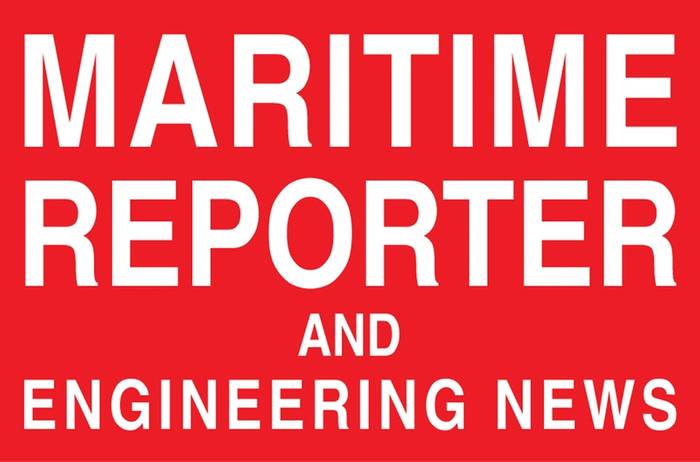Letter to the Editor
Maritime’s Nuclear Option: There’s so Much More
I would like to make to some enhancements to the detailed article entitled Molten Salt Reactors, Maritime’s Nuclear Option featured in the September edition of Maritime Reporter & Engineering News.
The article features the Ulstein concept for a thorium molten salt reactor in what is essentially a mobile charging station for other zero emissions vessels - it is a hybrid floating nuclear power plant and ship. I would like to give some additional context to the information presented in the article.
Marinized nuclear reactors have been deployed in both naval and commercial segments for some time. But their wide scale commercial deployment rests on being able to address to following:
Nuclear reactors have powered naval ships since the US Navy lunched the submarine Nautilus in 1955. According to Lloyd’s Register around 100 naval reactors are in use today. Naval technology is largely based on second generation pressurized water reactors.
Commercial pressurized water nuclear reactors have already been tested in marine applications. The U.S. flagged Savanah sailed between 1962 and 1971, the German Otto Hahn between 1968 and 1977 and the Mitsubishi Heavy Industries built Mutsu between 1974 and 1992 in Japan. Undoubtedly the most experienced country in terms of commercial nuclear reactors is Russia. Starting with the icebreaker Lenin, commissioned in 1959 and decommissioned in 1989, there are currently six operational icebreakers and three under construction in Russia. The cargo vessel Semporput is also active. In addition to marine propulsion, Russia is home to the Akademok Lomonsov FNPP and is building for more floating power barges. One of the disadvantages of the pressurized water reactors is the need to return to a safe port every few years for the removal of spent fuel and refueling with new few. The handling of these fuels needs to be carried out in secure facilities to manage proliferation and safety concerns. The second disadvantage of pressurized water reactors is the requirement of a large safety zone around the reactor in case of a reactor incident or failure.
China is also developing pressurized water reactor-based designs. China National Nuclear Corporation, through China Marine Nuclear Power Development Co. and China General Nuclear Power have both announced plans to build floating nuclear power plants based on their respective small, pressurized water reactor designs at CSSC shipbuilding yards. CGN has also tested the newbuilding market for a 30,000 deadweight tonnes icebreaker. CSSC is also developing its own proprietary floating nuclear power plant design based on pressurized water reactors derived from a nuclear submarine design.
In addition to developments in Russia and China, marinized pressurized water concepts, mainly for FNPPs are being developed in South Korea (Korea Electric Power Corporation/Daewoo Shipbuilding & Engineering), and the USA (NuScale/Prodigy Clean Energy/Kinetrics and the Massachusetts Institute of Technology).
To broaden market take-up of nuclear technology, technologies featuring longer fueling cycles, walk-away safety and proliferation resistance and cost competitiveness are required. Many see Generation IV small, modularized reactors (SMR) as the answer to these challenges.
Of the six Generation IV reactor concepts, the SMR concept most often highlighted as suitable for marine applications is the molten salt reactor (MSR). Several MSR concepts are being developed in Europe, the USA, Canada, Russia, China and India. These reactors operate in either uranium/plutonium or thorium/uranium 233 fuel cycles or as trans-uranium burners carried in either fluoride or chloride coolants.
The U.S.’s Matringale is developing the shoreside ThorCon floating nuclear power plant featuring two MSRs with a four-year refuelling cycle.
Denmark’s Seaborg Technologies is developing a compact Gen-IV molten fluoride salt reactor with a 12-year refuelling cycle. Built in modules and aimed at deployment on floating power plants, the design is ongoing, and ABS issued a Feasibility Statement for the MSR in 2020, the first step in the five phase New Technology Development process. A commercial prototype is planned for 2025 and power barge serial production from 2026. Seaborg is partnering with Korean shipyards and the Korean nuclear industry.
MSR designs featuring chloride salts allow for longer refuelling cycles, estimated at 20-30 years. Based on TerraPower’s MSR design, the UK’s Core Power is developing an MSR fuelled by chloride salts that is aimed specifically at marine applications. Designed for ship propulsion, Core Power plan to initially deploy its MSRs on floating production units that produce hydrogen-based shipping fuels, such as ammonia.
South Korea’s Ulsan National University of Science and Technology is leading a consortium of industry and university partners to develop a Gen-IV fast spectrum SMR with a 40-year fuel life for deployment as marine propulsion and in floating nuclear power plants.
Regulatory and licensing issues mean that MSR concept development will be long. Demonstration projects are possible after the middle of this decade and commercial solutions may be seen before the end of the decade, although it is more likely to see the technology developed at scale in the 2030s. Finding suitable solutions to the challenges of deploying marinized nuclear reactors will offer some shipping and offshore segments an interesting choice in the zero emissions vessel tool box.
